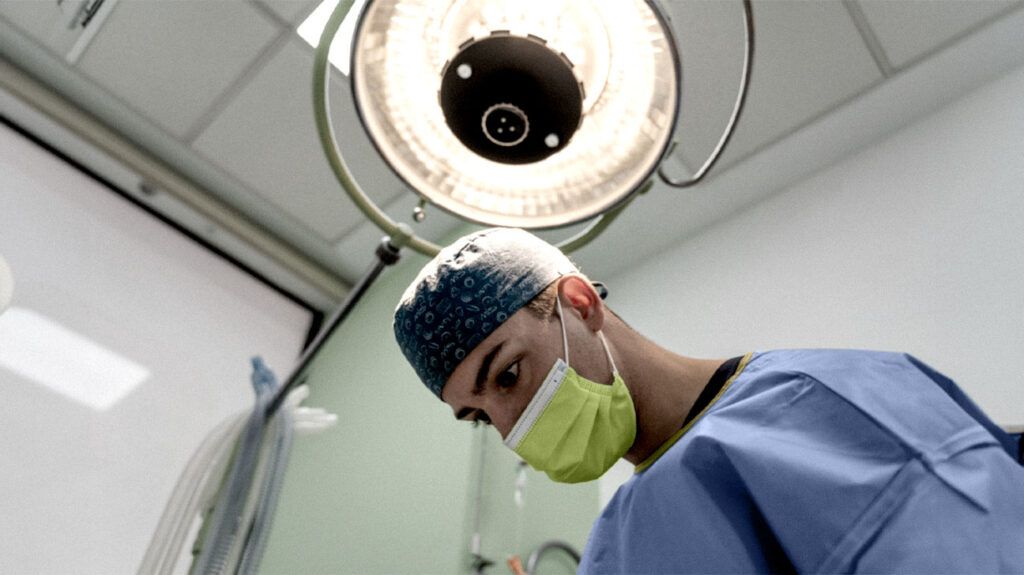A mastoidectomy is a type of surgical procedure on a part of the temporal bone called the mastoid. Doctors typically recommend the procedure to treat conditions called mastoiditis and cholesteatoma.
The temporal bone is located in the skull, behind the ears. The mastoid is a section of the temporal bone filled with air cells. The structure resembles a honeycomb or porous sponge.
Doctors use a mastoidectomy to treat or remove growths or infections that can sometimes affect this area.
This article reviews mastoidectomy surgery, including when doctors recommend it, the benefits of the procedure, and more.

A doctor or surgeon may recommend a mastoidectomy to treat various conditions,
- Acute mastoiditis: Mastoiditis is a bacterial infection of the mastoid cells. It is the
most common complication of acute otitis media, a middle ear infection. - Chronic mastoiditis: This is an ongoing infection of the middle ear and mastoid cells.
- Cholesteatoma: Cholesteatoma is a
benign growth of skin cells in the mastoid or middle ear.
Doctors can also use a mastoidectomy in combination with tympanostomy tube placement for people with complications of acute and chronic ear infections.
Additionally, surgeons may use a mastoidectomy as a surgical approach when performing other procedures, such as:
- labyrinthectomy
- facial nerve surgery
- endolymphatic sac surgery
- cochlear implantation
A mastoidectomy
People with mastoiditis may avoid some of the potentially serious complications associated with the infection by having a mastoidectomy. They will also likely heal faster than those who receive antibiotic intervention alone.
People with chronic conditions or infections who undergo this procedure may benefit from no longer experiencing chronic ear drainage and irritation. They may also regain some hearing in the affected ear and avoid complications associated with infections spreading toward the brain.
There are
Doctors may recommend canal wall up – which preserves more of the bone – for the episode of acute mastoiditis.
Sometimes, they may recommend canal wall down for recurrent cholesteatoma or chronic, persistent ear infections.
Mastoidectomy is not suitable for people who cannot undergo elective surgery.
A person will receive general anesthesia before the procedure. A surgeon
The surgeon will then typically perform the following steps:
- They make a small incision behind the ear to access the bone.
- Using a microscope and a small drill, they create a hole in the bone. They use suction irrigation to keep bone dust and other debris out of the surgical site.
- They drill out the air cells with the infection or growth.
- Finally, the surgeon stitches the incision back up and applies gauze to keep the surgical site dry and clean.
The surgery team for mastoidectomy may consist of a:
- surgeon
- anesthesiologist
- nurse
- surgical technician
- video technician
In most cases, a person will need to stop eating about 6 hours before the procedure. They may also need to stop drinking around 2 hours before the procedure. However, this can differ between hospitals, so it is important to check beforehand when a person should last eat and drink.
A doctor can advise on whether the person will need to stop taking any medication before the operation. They can also provide information about the following:
- what time the person will need to arrive at the hospital
- how long they may need to stay afterward
- the expected recovery time
A person may need to stay in the hospital following the procedure for monitoring. The doctor or surgical team can advise them beforehand so they know what to bring with them.
People
The person will usually need to avoid exercise or strenuous physical activity for around 4 weeks following the procedure.
They will need to follow instructions from the surgical team about the following:
- returning to activities
- attending follow-up appointments
- monitoring for any signs of infection
Learn about the symptoms of a bacterial infection.
Recovery typically takes around 6–12 weeks.
A person will need to refrain from engaging in strenuous activities or exercise for around 4 weeks. Their doctor or surgeon can advise on any gentle exercises they can do while they recover.
People will also need to follow all discharge instructions carefully to help prevent infection during recovery, including covering the affected ear and preventing it from getting wet.
As with any procedure, mastoidectomy has some risks.
Some potential complications
- hearing loss
- facial nerve paralysis or weakness
- vertigo or dizziness
- changes in how things taste
- tinnitus
A 2023 review of studies found little difference in quality of life following either type of mastoidectomy procedure. This means that a person can expect similar results and recovery following either type of mastoidectomy surgery.
Below are answers to common questions about mastoidectomy surgery.
Is mastoidectomy a major surgery?
Mastoidectomy is a major surgery. A person
Does hearing improve after mastoidectomy?
Some people may develop hearing loss as a result of the mastoidectomy. A person can discuss the risk of this complication with their doctor or surgeon beforehand.
How long is the hospital stay for a mastoidectomy?
In some cases, a person may be able to go home the same day after a mastoidectomy. Others may need to stay overnight in the hospital following the procedure. A person’s doctor can let them know whether they need to pack an overnight bag before the surgery.
Mastoidectomy is a procedure that involves drilling into the mastoid bone, which is behind the ear. The surgery can help treat mastoiditis, remove benign tumors, or aid in other procedures.
A person will undergo general anesthesia before the procedure. They may be able to go home the same day or the day after. They will typically need to avoid strenuous exercise for around 4 weeks afterward but can expect to fully recover within around 12 weeks.
